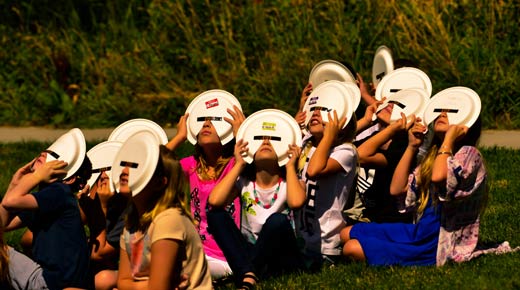Young eclipse watchers. Elementary class enjoying the eclipse of 2017
Credit: Karen McQuilkin
We set aside our cardboard glasses and our papers pricked with holes, stepped away from the telescope guy, the one who would have been “that weird guy” any other day, except for today, when he’s your new best friend. And for those who thought maybe they could just glance at the eclipse with their naked eye “just for a bit, I’m sure it’s OK, yeah?” the spots are beginning to clear.
|
ADVERTISEMENT |
It’s over. For 150 minutes Selene’s chariot streaked across the heavens to block her brother’s view of Earth. And for 150 seconds, millions stood, raptured as she set a diamond diadem round Helios’ head. Joy as well for those in Sister Moon’s penumbra, as Helios smiled, and a thousand crescent dapples of light danced, laughing, beneath the trees and umber sky.

Millions drove millions of combined miles to be in the totality of Monday’s eclipse, for most of us a once-in-a-lifetime event. And not just that. A communal event, although we probably didn’t see it that way.
…

Comments
Human Interaction
Anyone who wonders why organizations are making great efforts to promote "engagement", should consider this column. It has become too easy for people to withdraw into a cybershell, communicating electronically. As this isolation becomes insulation, people become caricatures, defined more by perception than reality. Anything that returns humanity to any environment can only be an improvement.
Add new comment